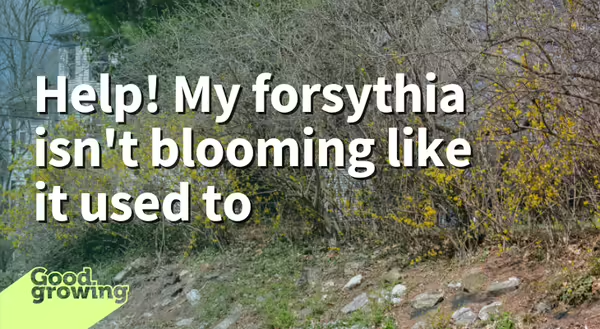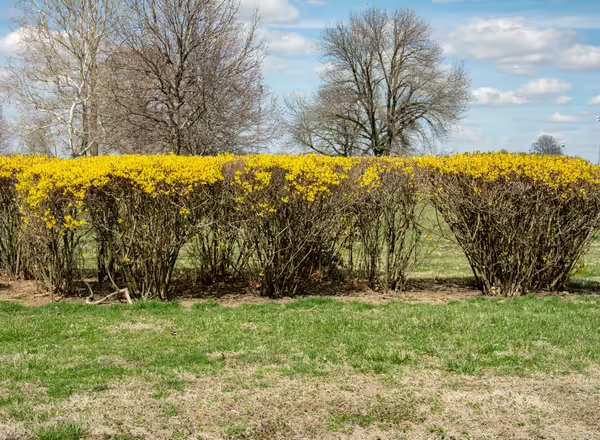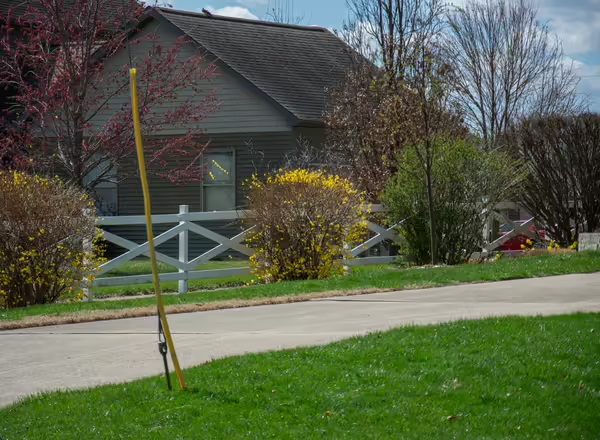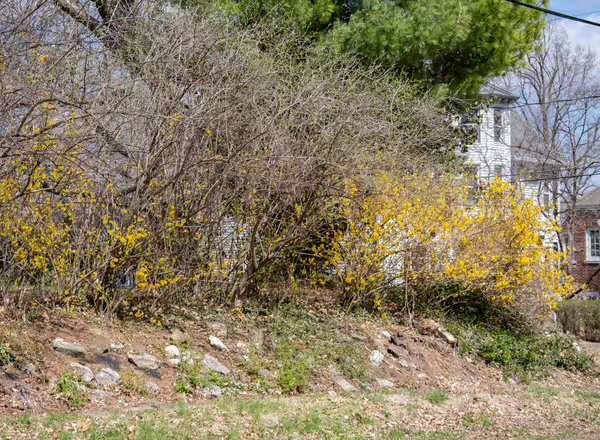
Forsythias are planted for their stunning floral display in early spring. Have you ever seen a forsythia bush, and for some reason, there are only blooms at the very top or sparsely scattered around the plant? Or maybe wondered why it didn't bloom at all?
While forsythia will produce an impressive floral display in the spring, they don't provide much interest for the rest of the year, making a poorly blooming plant a major disappointment in the landscape. There are several different reasons forsythia may be blooming poorly.
Have Your Forsythia Been Properly Pruned?
Shrubs are typically classified into three different bloom times: spring, summer, and fall. When they bloom will dictate the best time to prune them if we want to preserve flower buds. Forsythia and other spring-blooming shrubs like lilacs and vernal witch hazel start developing flower buds the previous year, meaning they bloom on old wood. Plants that bloom in the summer or fall produce flower buds on the current year's (new) growth.
In many cases, the most likely cause is the plants were improperly pruned. Since they bloom on old wood, the flower buds will be removed if they are pruned in the fall or winter. The best time to prune forsythia and other spring-blooming trees and shrubs is shortly after they are done blooming in the spring.
Forsythias will produce upright or arching branches and, have a rounded upright growth habit, and can get quite large, up to 8 to 10 feet tall and 10 to 12 feet across. However, they are commonly pruned as a hedge. This formal, compact, box-like appearance goes against the natural form of the plants. Maintaining forsythia as a hedge will require pruning later in the season removing flower buds. If space is an issue, smaller cultivars such as 'Fiesta' (3-4 feet tall and wide) and Show Off® Sugar Baby® (1.5-2.5 feet tall and 2-3 feet wide) exist.
Forsythia will bloom best if they are regularly pruned. Once plants have established, prune out 1/3 – ¼ of the oldest stems at ground level every other year (thinning). This will help promote new, vigorous growth. If plants have been neglected or have become overgrown, they can be rejuvenated by being cut back to within a few inches of the ground in the winter. The plants will then send out new growth, but it may take a year or two for them to bloom.



Sunlight and Weather
Another reason forsythias may not bloom well is lack of sunlight. Look at the plants surrounding the forsythia: were they planted near a tree that has now grown large enough to shade them? For the best floral display, forsythias need full sun exposure. The less light they get, the fewer blooms they will produce.
Cold weather can also affect the floral display of forsythias. While forsythia plants, for the most part, are hardy to zone 4 or 5, the flower buds may not be as hardy. When temperatures drop below -10°F, flower buds may be killed or damaged in many cultivars. Fortunately, there are cultivars, such as 'Meadowlark,' 'Northern Gold,' and 'Northern Sun,' which have flower buds that are hardy down to -30°F.
Good Growing Tip of the Week: Spicebush is a native alternative to forsythia that produces yellow, fragrant flowers (the leaves are also fragrant) in the spring and good fall color. The plants will also support a variety of wildlife, and the female plants will produce red berries.
Want to get notified when new Good Growing posts are available? SIGN ME UP!
Give us feedback! How helpful was this information (click one): Very helpful | Somewhat helpful | Not very helpful
MEET THE AUTHOR
Ken Johnson is a Horticulture Educator with University of Illinois Extension, serving Calhoun, Cass, Greene, Morgan, and Scott counties since 2013. Ken provides horticulture programming with an emphasis on fruit and vegetable production, pest management, and beneficial insects. Through his programming, he aims to increase backyard food production and foster a greater appreciation of insects.